Microglia and monocyte-derived macrophages drive progression of pediatric high-grade gliomas and are transcriptionally shaped by histone mutations
- PMID: 39395421
- PMCID: PMC11578068
- DOI: 10.1016/j.immuni.2024.09.007
Microglia and monocyte-derived macrophages drive progression of pediatric high-grade gliomas and are transcriptionally shaped by histone mutations
Abstract
Pediatric high-grade gliomas (pHGGs), including hemispheric pHGGs and diffuse midline gliomas (DMGs), harbor mutually exclusive tumor location-specific histone mutations. Using immunocompetent de novo mouse models of pHGGs, we demonstrated that myeloid cells were the predominant infiltrating non-neoplastic cell population. Single-cell RNA sequencing (scRNA-seq), flow cytometry, and immunohistochemistry illustrated the presence of heterogeneous myeloid cell populations shaped by histone mutations and tumor location. Disease-associated myeloid (DAM) cell phenotypes demonstrating immune permissive characteristics were identified in murine and human pHGG samples. H3.3K27M DMGs, the most aggressive DMG, demonstrated enrichment of DAMs. Genetic ablation of chemokines Ccl8 and Ccl12 resulted in a reduction of DAMs and an increase in lymphocyte infiltration, leading to increased survival of tumor-bearing mice. Pharmacologic inhibition of chemokine receptors CCR1 and CCR5 resulted in extended survival and decreased myeloid cell infiltration. This work establishes the tumor-promoting role of myeloid cells in DMG and the potential therapeutic opportunities for targeting them.
Keywords: CCR1; CCR5; TAM; diffuse midline glioma; disease-associated macrophage; high-grade glioma; macrophage; microglia; monocyte; pediatric glioma.
Copyright © 2024 Elsevier Inc. All rights reserved.
Conflict of interest statement
Declaration of interests The authors declare no competing interests.
Figures

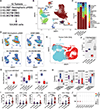
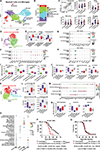
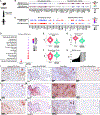
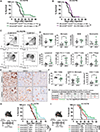

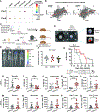
Comment in
-
Navigating the mutation maze: An oncogenic driver's guide to macrophage reprogramming.Immunity. 2024 Nov 12;57(11):2489-2491. doi: 10.1016/j.immuni.2024.10.007. Immunity. 2024. PMID: 39536713
References
-
- Mackay A, Burford A, Carvalho D, Izquierdo E, Fazal-Salom J, Taylor KR, Bjerke L, Clarke M, Vinci M, Nandhabalan M, et al. (2017). Integrated Molecular Meta-Analysis of 1,000 Pediatric High-Grade and Diffuse Intrinsic Pontine Glioma. Cancer Cell 32, 520–537 e525. 10.1016/j.ccell.2017.08.017. - DOI - PMC - PubMed
-
- Siddaway R, Canty L, Pajovic S, Milos S, Coyaud E, Sbergio SG, Vadivel Anguraj AK, Lubanszky E, Yun HY, Portante A, et al. (2022). Oncohistone interactome profiling uncovers contrasting oncogenic mechanisms and identifies potential therapeutic targets in high grade glioma. Acta Neuropathol 144, 1027–1048. 10.1007/s00401-022-02489-2. - DOI - PMC - PubMed
Publication types
MeSH terms
Substances
Grants and funding
LinkOut - more resources
Full Text Sources
Medical
Molecular Biology Databases

